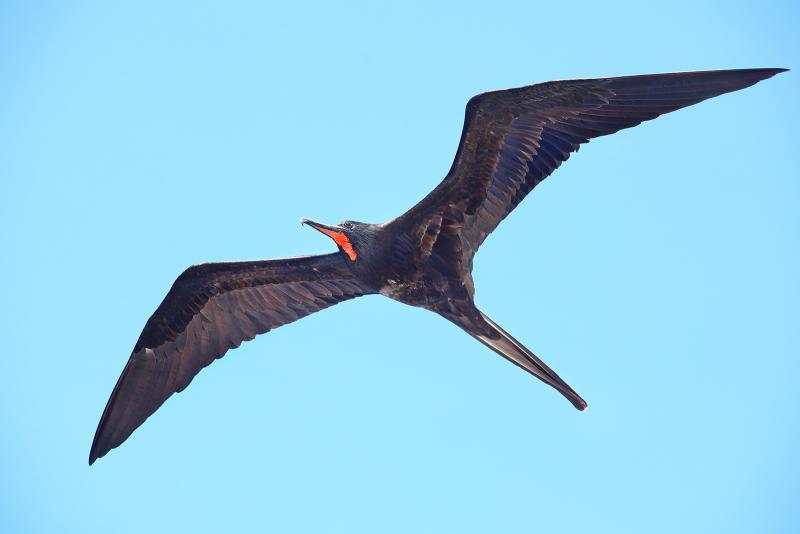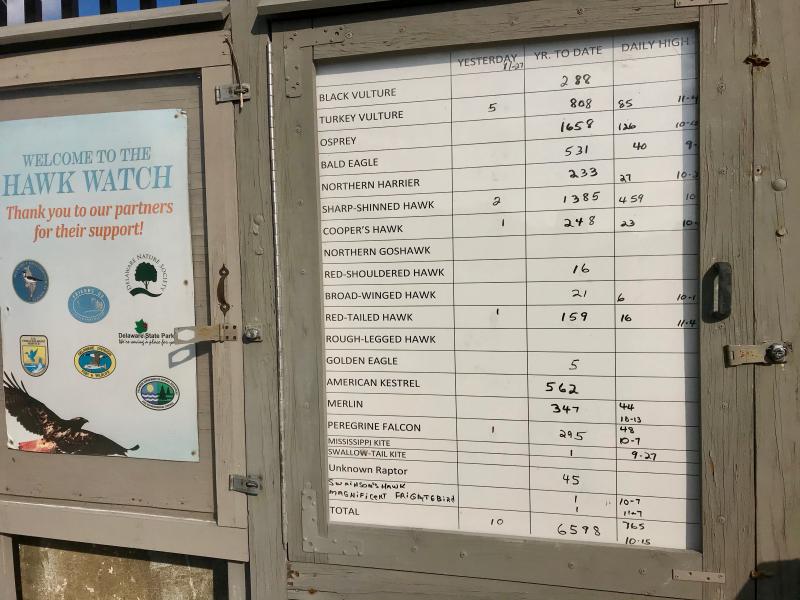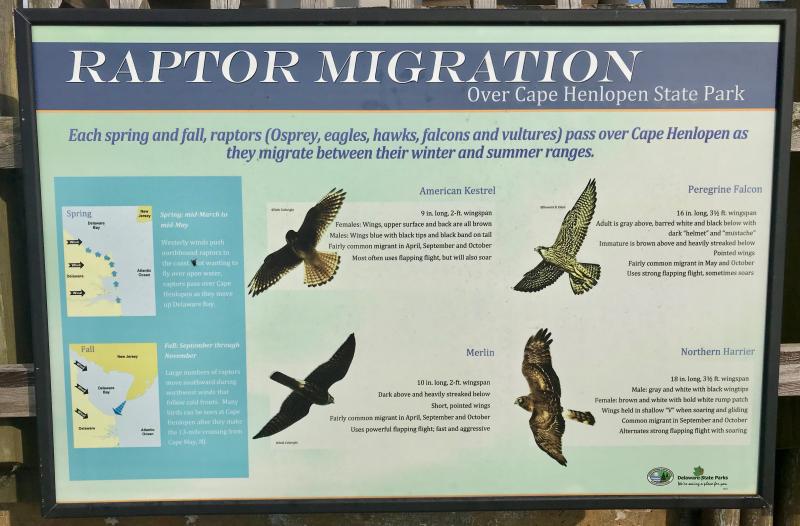A Magnificent Frigatebird at Cape Henlopen Hawk Watch?
There are days when hawks, eagles and other birds of prey fly fast and furious over the Hawk Watch platform atop an oceanfront bunker in Cape Henlopen State Park. And then there are days when dense fog and rain make spotting southerly migrating hawks just about impossible.
This year’s Hawk Watch season, running annually from Sept. 1 through Nov. 30, brought both conditions. It’s a serious endeavor. Volunteers and one professional birder, coordinated by Delaware Ornithological Society, mount the steep steps to the observation platform seven days a week. From 9 a.m. to 4 p.m. they scan the skies with bare eyes and binoculars. They carefully record and report each sighting to DOS, and maintain a whiteboard at the platform showing species and numbers.
Sue Gruver, a volunteer coordinator, said this fall’s weather wasn’t particularly helpful. “Lots of rain and fog. Some days you couldn’t even see the ocean.”
But there were other days that were nothing short of spectacular. “On Oct. 14, all conditions were perfect. We counted 765 hawks and other raptors that day – 459 of them sharp-shins. Nonstop action. They were coming at us from all directions, 360 degrees. That’s why we love to have helpers. And then there was another day when we spotted our most unusual bird of the season – a Magnificent Frigatebird. They’re a bird of the gulf coast of Florida and Texas. How he got to us I do not know. When all was said and done, we still counted more hawks this year than last.”
Gruver said having volunteers with particular expertise is especially helpful. “Bruce Peterjohn is retired from the U.S. Geological Service’s bird-banding program. He was real good.”
Jen Ottinger, a professional birder, has been contracted for the past nine years to bring her expertise to the Cape Henlopen Hawk Watch. Delaware’s Fish and Wildlife Division provides grant money to pay for her services. “I love birds, all of them, but especially the raptors and eagles. The Hawk Watch is a great place for birding. With the ocean right there, you get shore birds, sea ducks as well as the migrating raptors. There’s a huge variety of bird life there.”
Cape May, across the mouth of Delaware Bay from Cape Henlopen, is often touted as a birder's paradise in the fall because southward migrating species tend to funnel to the point there and concentrate before crossing Delaware Bay. But Gruver said once the birds reach the point at Cape May, they head off in all kinds of directions to make their bay crossing. Some go straight across, she said; others may go out to sea; still others go up the Jersey side of the Delaware Bay before crossing the waterway as it narrows.
Wind a major factor
Ottinger said counts at Cape Henlopen are especially dependent on the wind. “Direction and strength,” she said. “On that great day in October, there was a big push of birds after a cold front moved through. Winds were perfect for our site. Northwest and west, not too strong, and right at the time when we get our peak flight here.”
The sighting of the Magnificent Frigatebird, said Ottinger, came on Nov. 7. “It was migrating southward. Maybe it was pushed up north of us by west or southwest winds associated with one of the many hurricanes this year. The last time we saw a Magnificent Frigatebird was in 2005. To the very day. Nov. 7. We also saw a Mississippi Kite this year, which is rare for the East Coast.”
Ottinger said generally speaking, numbers of raptors migrating past Cape Henlopen southward have been declining over the past five years. “It’s not getting cold as early as it used to. Migration is all about food resources. With warmer weather, we’re not getting as many fronts in the fall that force birds to leave their northern feeding grounds. Birds aren’t migrating as early as they used to, and some are not migrating as far south as they used to. I’m not alarmed by the declining numbers. I think the populations are still there, but weather patterns are changing. The watch still gives an opportunity over time to census the population of different species. After 10 or 20 years of data, we get an idea of which species are increasing, which ones are declining.”
So now that the 2020 Cape Henlopen Hawk Watch is in the books, where will Ottinger be taking her skills next?
“Arizona,” she said. “The Arizona Game and Fish Commission has contracted me to watch bald eagle nests in the Phoenix area. But I plan to be back here next fall. I’ve been all across this country. I think Cape Henlopen is one of the best state parks there is.”


























































